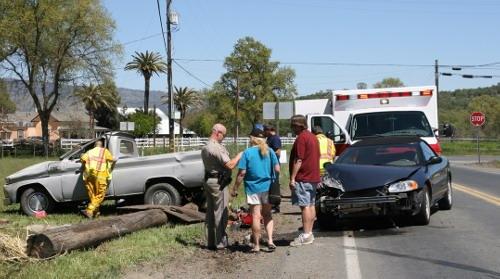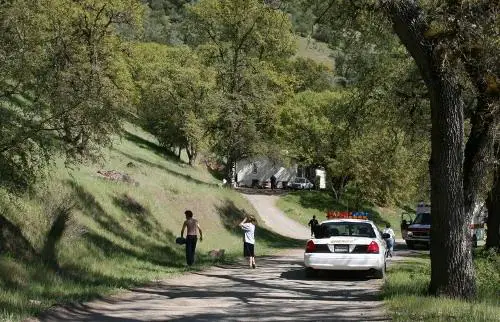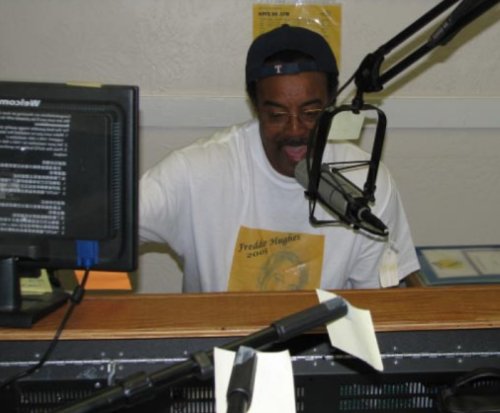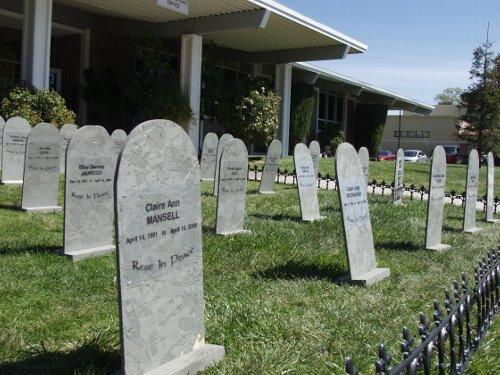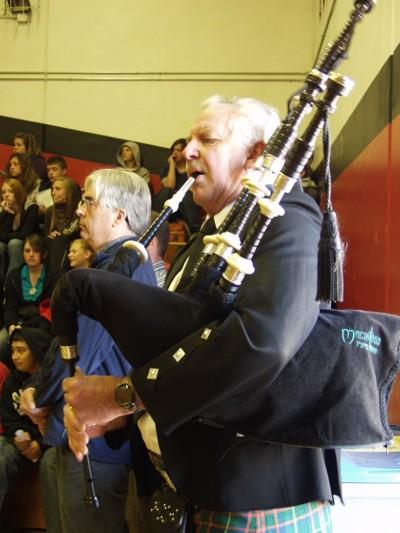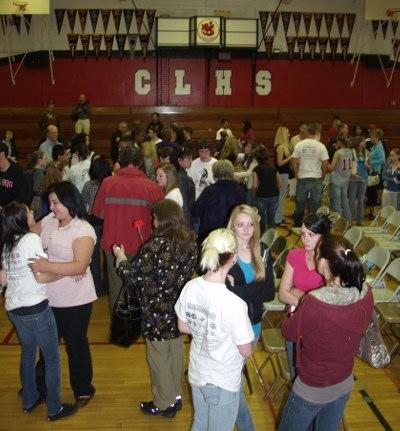
Last year about this time I wrote a column that ended with the offer to provide my special tomato growing techniques to anyone interested. I had many requests for the information and have decided to dedicate this week’s column to that information.
I have read countless articles and watched numerous television segments about tomato growing, and after years of personally growing and experimenting with tomatoes I have finally come to the conclusion that these articles and segments are mistaken. Too many times I've heard that tomato plants need lots of attention and care to produce great results. I think that this view leads to pampered, spoiled, finicky plants that you waste a lot of time on and wind up with a poor outcome for all your hard work.
If you truly want the best tomatoes, you want your tomatoes to be balanced on a line just between happy and miserable. Why? Tomatoes are technically classified as a “tender perennial.” This means that deep in the tomato’s genetic code it believes that it is going to live a long life, the life of a perennial plant, but being tender it also knows that one frost can end its chance to pass on its genes to another generation.
A happy tomato plant doesn't feel the need to reproduce in order to save the species. After all, it is being well taken care of and can anticipate a long life, so as a consequence it won’t produce a lot of fruit. A tomato plant that's miserable quickly puts out lots of fruit so it can die knowing that it has passed on its lineage. By keeping the tomatoes teetering between happy and miserable, you'll have a strong plant that produces lots of fruit over a long period of time.
You can break the habit of working for your tomatoes and make your tomatoes work for you. The method I use takes a lot of work in the beginning, but then very little work is needed over the remainder of the growing season and it makes for many easy years to come. I have spent many years testing various methods, and have used this method for the last several years with magnificent results.
The preparation
In my garden, I started by digging a hole, 6 feet by 4 feet by 3 feet deep. Then I refilled the hole with alternating layers of steer manure, garden soil, chicken manure, compost and fertilizer. For the fertilizer layer I used a mixture of kelp meal, bat guano, blood meal and green sand.
I continued filling the hole layer by layer until it was completely refilled. Then I built a raised bed the same length and width of the hole using 6 inch by 2 inch redwood boards and set it in place around the hole. I recommend redwood because it’s pest resistant and durable. This bed will last for years with almost no maintenance. Once the raised bed is set, continue filling it with the same layering method mentioned above.
A lot of people make the mistake of just working the fertilizer into the first 3 to 5 inches of soil. The result is that the tomato has no motivation to grow downward in search of more water or nutrients, because all the good stuff is right there near the surface. As you fill in the bed use less and less fertilizer in the higher levels. Remember, the more you make the tomatoes work, the more you can ignore them.
For those of you who are already wondering about crop rotation, I build one of these beds per year so that every year the tomatoes will be in a brand new bed and the old bed is dedicated to a different crop. Last year’s tomato bed is this year’s artichoke bed.
The next thing you want to do in preparing your bed is to lay down a soaker hose with the hose going down the middle of each row and along the outside edge. I don't like drip irrigation for this because of clogging; you'll understand why soon.
Now I lay down red plastic sheet mulch, which you can find in most garden stores or on the Internet. Once it's laid down covering the bed, I secure it down with garden staples. These also can be purchased at the garden store; however I prefer to make mine myself out of wire clothes hangers that the dry cleaners put my shirts on. That allows me to make them extra long (due to my soil being very loose and fluffy the extra length holds better). I use lots of staples – I want that mulch secure! Now I cut six “Xs” in the mulch, one for each tomato plant, evenly spaced about a foot from the edge of the box, in two rows of three about 18” apart. Now I'm ready to plant the tomato plants.
Planting
So let's talk about the tomato plants themselves. I only use the heirloom seeds of indeterminate plants. For those who don't know, indeterminate tomato plants continue to grow longer throughout the season, producing smaller amounts of tomatoes over a longer period of time. On the other side of that coin, determinate tomatoes produce a large amount of tomatoes over a shorter time. If you want to put up canned tomatoes you would want to choose a determinate type so you can have a whole bunch at once, but if your goal is fresh tomatoes coming regularly for quite a while then you want to go with an indeterminate variety.
I plant one tomato plant in each X that was cut into the plastic mulch, and then I surround it with a red water-filled plant insulator. There are several types on the market, and when they start paying me for my endorsement I'll give you more specific names. The insulator keeps the tomatoes warm in the cool nights and protects them from sunburn during the day until they are strong enough to take care of themselves. I leave them on the plants the entire season because the tomatoes can always use the extra heat, and I could hurt the plant trying to remove them.
Some people may ask, “Why should the insulators and mulch be red?” Studies have shown that tomatoes can produce 20 percent more fruit if there is red light reflecting up from the ground, and with the improved results I've personally witnessed using the colored insulators and mulch I'm a firm believer in the use of red with tomatoes.
Now the next part of the job is building the tomato supports. Some studies have shown that tomato plants produce more fruit if they are allowed to sprawl across the ground. While this may be true this also makes the fruit more vulnerable to slugs, and I'm sorry to say I don't want to share my tomatoes with them.
Now, the insulators will give the plants the support they need until they're about 2 feet tall so that's where my supports start, at 2 feet off the ground. I use 10-foot long stakes made of steel rebar, painted red (yes, more red) with an anti-rust spray paint primer.
Rebar is very inexpensive and is available at your garden store or hardware store. My rebar tomato cages are 10 feet tall with a welded rebar latticing halfway up and more rebar latticing at the top. Yes, my tomatoes will reach the top and will even make it back down to the ground before the end of the season. You can choose a different support system but keep in mind that by the end of the season my tomatoes are over twenty feet long when stretched out.
Just a little quick fact about that amazing rebar, the metal rods you see being part of bridges, driveways, and concrete structures: Rebar is made out of the melted firearms used in crimes, confiscated in raids and gun surrender programs.
Now that the plants are in place and all their supports are in position, give your tomatoes a good, heavy watering. Pour some water with fertilizer (whether it's chemical or organic is up to you) through the X in the plastic mulch, but also start up your soaker hose irrigation and give it a ridiculously heavy watering. Let it water all day long so you get water down to the bottom of the pit you dug.
Keep in mind that not only are you trying to water the tomato plants but you are re-hydrating the dry absorbent materials in the soil. This initial heavy watering sets up the condition of not having to water much for the rest of the summer. The roots of the plants will chase the water table as the season goes on.
Your tomatoes are now planted in a deep, rich, loose soil, covered with red plastic mulch that will not only increase fruit yield but keep moisture from evaporating, and supported by red insulators and tomato cages that will hold up the tomatoes throughout the season. Your work is essentially over and now you can relax and let the tomatoes do their work. All you have to do is occasionally shove branches back into the cages as they try to escape and offer a little maintenance.
Maintenance
Suckers are the little branches that form at the point where the leaf attaches to the plant. If you leave them there you will get more tomatoes, but they will be smaller in size; if you “pinch” them or cut them off, you will get fewer tomatoes but of larger size. I typically leave them alone on four of my plants and pinch them on the other two. If you planted determinate type tomatoes don’t pinch the suckers, they need them.
Compost tea or chemical fertilizers should be your best friends. I use compost tea and spray it on my tomato plants every couple of weeks. Compost tea and manure tea are made by adding several cups of compost and/or manure to a five gallon bucket of water. You then let it sit for a couple of days to “mature” (stirring occasionally) and then filter it through a mesh filter, cheesecloth or gauze. This allows nutrients to infuse the water and beneficial microbes to grow. Then pour the tea into a spray bottle and spray the leaves of the tomato plants. This is called foliar feeding, and is a great way to give an extra boost of energy to your plants.
Avoid foliar feeding during the sunny parts of the day because it can cause the leaves of the plants to get burned. Think of every droplet of water being a tiny magnifying glass focusing sunlight onto the leaf surface, or you can compare it to you being wet in the hot sun and getting burned easily. Early morning is the best time for this kind of treatment. Foliar feeding is far under-used in gardens. I believe so strongly in foliar feeding that I have a dedicated three gallon sprayer just for the tea.
My garden is organic; not by voluntary choice, but more of necessity. A while back I had a problem with slugs and laid down a common commercial poison for them, and ended up poisoning my wife's cat. Now I'm organic and pick the slugs off myself. If you don't have a cat or you hate your neighbor's cat, then poison away. I won't push my way of gardening on others!
How many times should you water your tomatoes? I hear people say, “Once or twice a day,” or “four times a week.” I love to watch people's faces when I tell them that I only water my tomatoes once or maybe twice a month, four times a year at most! I keep track of these things and I only watered four times last year, and once was just because I was leaving town for several days and I wanted to be safe.
Watering your tomatoes should only be done to keep the plants alive, not happy. Tomato plants naturally look wilted during the heat of the day. Let your plant whine about the heat all it wants; later in the evening when the sun is low, THEN check to see if the tomato is still drooping. If it is, then you will know that it does actually need watering. I prefer to check my tomatoes in the morning after they’ve rested during the night.
Too many people baby their tomato plants and water them whenever it's hot, and what they are doing is training the plant to have shallow roots and produce tomatoes that have less flavor and are fewer in quantity. Basically, you are raising a spoiled brat. By watering less, the tomato plant is forced to drive its roots downward chasing the water table, searching for water. Remember the point is to make the plant do the work. STOP RAISING SPOILED TOMATOES!
One day in the garden my wife told me that the tomato plants looked like they need watering. I told her “Don't believe a word that they're saying. As a matter of fact I'll help you understand – this plant’s name is Britney, this one's name is Paris, and this spoiled brat’s name is Lindsay; and isn't that nice, they're all in cages, so don't listen to anything they tell you! They are spoiled brats just wanting the easy life and I’m making them work for a living.”
We got a good laugh out of it and though they didn’t get water for weeks, they were all just fine. OK, yeah, I might have some pent up issues to deal with. The point is, you’ll see your plants whining and wilting when it’s hot out, but be strong and show ‘em that tough love, and make them work through the soil for their water.
Keep in mind that you NEVER want to water your tomatoes while the fruit is ripening. The tomato plant pushes that water into the tomato fruit causing it to crack, and it waters down the flavor of the tomato. If you have fruit that is ripening and you must water, harvest the tomatoes first, even if they need to ripen on the countertop a couple of days, you’ll have more flavorful fruit and be happier in the long run.
Using this planting and growing method the roots of my tomato plants have grown so strong and so deep that I couldn’t pull the plants out of the ground. I had to actually dig them out, and even then there were pencil sized roots over a foot down that had to be left in the ground.
In summary
Boy, that was a lot of information, wasn’t it? Let’s break it down.
For this method to work you have to have good, fertile, fluffy soil, so dig deep and use a raised bed. Layer with all different soils, composts and fertilizers, with less fertilizer near the surface. You must have an initial very heavy watering to permeate the soil to give the roots of the plants somewhere to chase down to. Use the red plastic mulch to help prevent evaporation, and use the red water insulators to protect the plants in their young tender stages.
Provide the plants with large sturdy cages to climb to keep the fruit off the ground. Spray with compost tea a couple of times a month. Only water when the plants are drooping in the cool parts of the day. Don’t listen to the whining! Keep them almost happy, but almost miserable, and you will have lots of large flavorful tomatoes all season long.
Ross A. Christensen is an award-winning gardener and gourmet cook. He is the author of "Sushi A to Z, The Ultimate Guide" and is currently working on a new book. He has been a public speaker for many years and enjoys being involved in the community.
